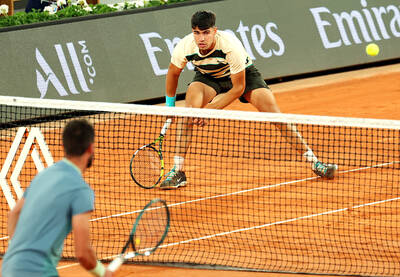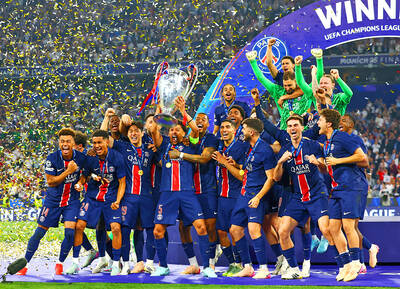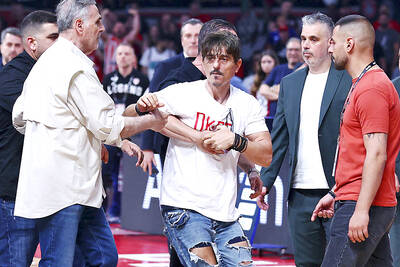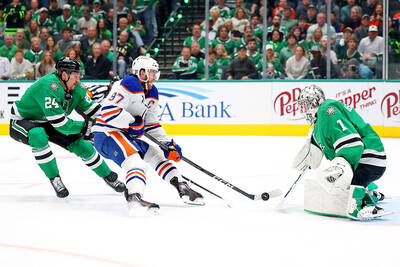On his first shift in the NHL, Matt Rempe dropped the gloves and fought veteran Matt Martin. Since then, he has taken photographs with adoring fans at a Cheesecake Factory and has had his name printed on custom T-shirts and chanted at Madison Square Garden, whether he is in the game or not.
Rempemania is in full bloom for the New York Rangers and their 2m, 109kg rookie, who has become something of a hero. This is almost solely due to his five fights in his first two months on the job, including the central role in an unusual 5-on-5 line brawl and a four-game suspension for a hit to the head. He is just 21.
Rempe’s popularity underscores the NHL’s complicated relationship with fighting. Tough guys and fighting both have faded in the league amid concerns about safety and an increased emphasis on skillful play, but it is clear that fans — a lot of them — love the brawls just as much as they did during the blood-and-broken teeth days of decades past.

Photo: Wendell Cruz-USA TODAY
Rempe is something like a warm memory, at least for now. He will quickly need to figure out how to balance pugilism and physicality with playing well enough to stay on the ice for the Stanley Cup-contending Rangers this season — and beyond.
“What happened the first two, three, four weeks of his career up there is not long-term sustainability,” said Dixon Ward, who coached Rempe as a teenager in Okanagan, British Columbia, and a veteran of 599 NHL games. “You’ve got to establish yourself and then you’ve got to pick your spots, but you have also have to show that you can play, and the only way you can show you can actually play is to stay in the game.”
Rempe has skated 84 minutes on the ice, spent 69 in the penalty box or the locker room, and recorded one goal and one assist since the Rangers called him up in February. Still, his jersey was featured in the front window of the NHL Store in New York, and “We want Rempe” is a familiar refrain from Rangers fans if their team is losing or being pushed around.
In and out of the lineup down the stretch, Rempe — who did not fight much in the junior Western Hockey League known for toughness — wants to prove he can stick around for more than just fisticuffs.
“I want to show the coaching staff that I can be a really effective player in the playoffs,” he said as the regular season winds down. “I don’t want to be a guy who just fights. I want to be known as tough, but I want to be known as a guy who’s a very effective bottom-six forward who can skate, be a really good checker, can be physical, be good defensively.”
The current NHL game has no place for one-dimensional fighters like the days of yesteryear, a product of the salary cap and rule changes that have minimalized the instances of bareknuckle boxing on skates. Rempe is a welcome throwback for those who contend fighting allows players to police the game themselves and keep intentional injuries to a minimum.
“With this story about Rempe, it’s kind of bringing it back a little bit,” said the Philadelphia Flyers’ Nicolas Deslauriers, who fought Rempe in February and leads the league with 11 fights this season. “It’s good for us. We try to keep this involved in the league. We all know it’s going away, but I think it’s strongly needed. I think it just settles people at the same time.”
Answering the bell has earned him the respect of rivals around the league: Toronto Maple Leafs enforcer Ryan Reaves said Rempe is “going to be a menace in this league,” the New Jersey Devils’ Brendan Smith called him “a tough customer” and Rangers captain Jacob Trouba said that “he’s not fearful of anyone and can hold his own.”
Beyond his many admirers — one Rangers fan site sells “Rempe’s Fight Club” shirts — there is concern from some corners of the game about all the punches he is taking after the deaths of retired enforcers like Derek Boogaard, Bob Probert and, as recently as last month, Chris Simon. Boogaard and Probert were found to have chronic traumatic encephalopathy, a degenerative brain disease that researchers have linked to concussions or repeated blows to the head.
“I have a brother that had over 200 fights,” Maple Leafs coach Sheldon Keefe said. “Certainly see the safety side.”
Ward, who racked up more than 400 penalty minutes in the NHL during a rough-and-tumble era from 1993-2002, said he wonders if Rempe will become typecast as just a fighter.
“He did a good job of creating some buzz around himself,” Ward said. “Now, how he handles that moving forward will determine how long it all lasts.”

FRUSTRATION: Alcaraz made several unforced errors over four sets against Bosnian Damir Dzumhur, who had never made it past the third round in a major competition Defending champion Carlos Alcaraz reached the fourth round of the French Open after laboring past Damir Dzumhur 6-1, 6-3, 4-6, 6-4 in the Friday night session. The second-seeded Spaniard had never before played Dzumhur, a 33-year-old Bosnian who had never been past the third round at any major tournament. “I suffered quite a lot today,” Alcaraz said. “The first two sets was under control, then he started to play more deeply and more aggressively. It was really difficult for me.” Dzumhur hurt his left knee in a fall in the second round, and had treatment on Friday on his right leg during the

‘DREAM’: The 5-0 victory was PSG’s first Champions League title, and the biggest final win by any team in the 70-year history of the top-flight European competition Paris Saint-Germain won the Champions League for the first time as Luis Enrique’s brilliant young side outclassed Inter on Saturday in the most one-sided final ever with teenager Desire Doue scoring twice in an astonishing 5-0 victory. Doue supplied the pass for Achraf Hakimi to give PSG an early lead and the 19-year-old went from provider to finisher as his deflected shot doubled the advantage in the 20th minute. Doue scored again just after the hour mark, ending any doubt about the outcome before Khvicha Kvaratskhelia ran away to get the fourth and substitute Senny Mayulu, another teenager, made it five. Inter were

The Greek basketball league finals between Panathinaikos and Olympiakos were suspended by the government on Monday following on-court scuffles involving rival security teams. The best-of-five series is at 1-1. The third game, scheduled for today, has been postponed. The owners of both clubs were summoned to meet with the country’s sports minister. They “will be asked to provide explicit guarantees that this situation will be brought to an end. If not, this year’s championship will be definitively canceled,” government spokesman Pavlos Marinakis said. “There can be no tolerance for such pathological phenomena of violence and delinquency.” In online posts, the owners of Panathinaikos and

The Edmonton Oilers on Thursday defeated the Dallas Stars 6-3 to book their place in the Stanley Cup Finals, setting up a repeat of last year’s NHL showpiece against reigning champions the Florida Panthers. The Oilers, bidding to become the first Canadian team to win the NHL’s championship series since the 1993 Montreal Canadiens, head to Florida for Game 1 of the best-of-seven series set for Wednesday. Florida, who are to play in the NHL showpiece for the third straight season, won last year’s title 4-3 to extend Canada’s decades-long Stanley Cup drought. Connor McDavid led Edmonton back to the championship series on